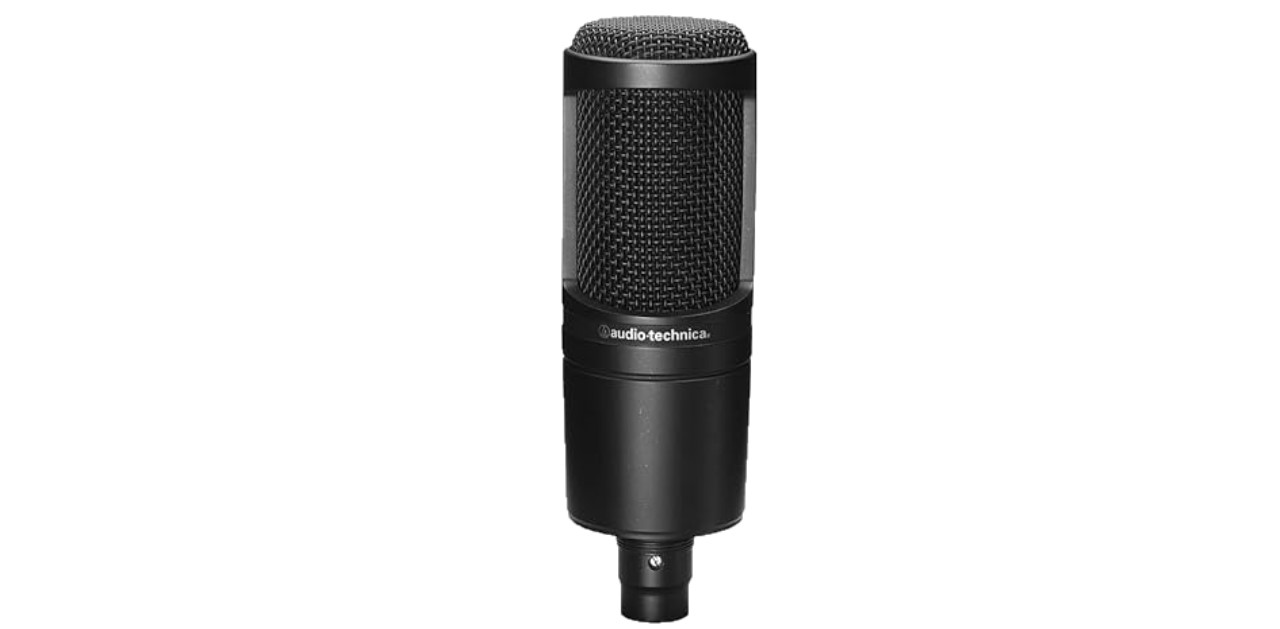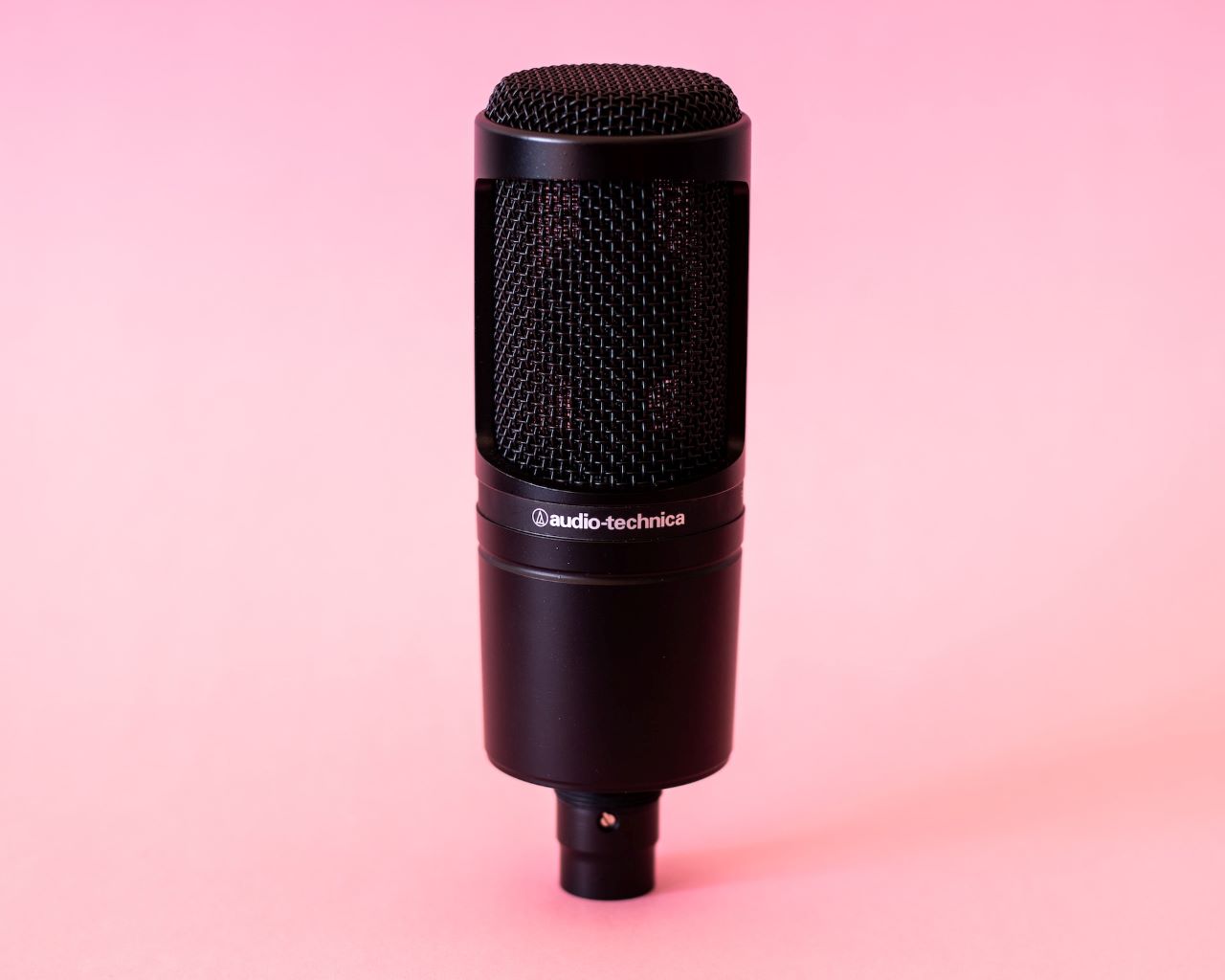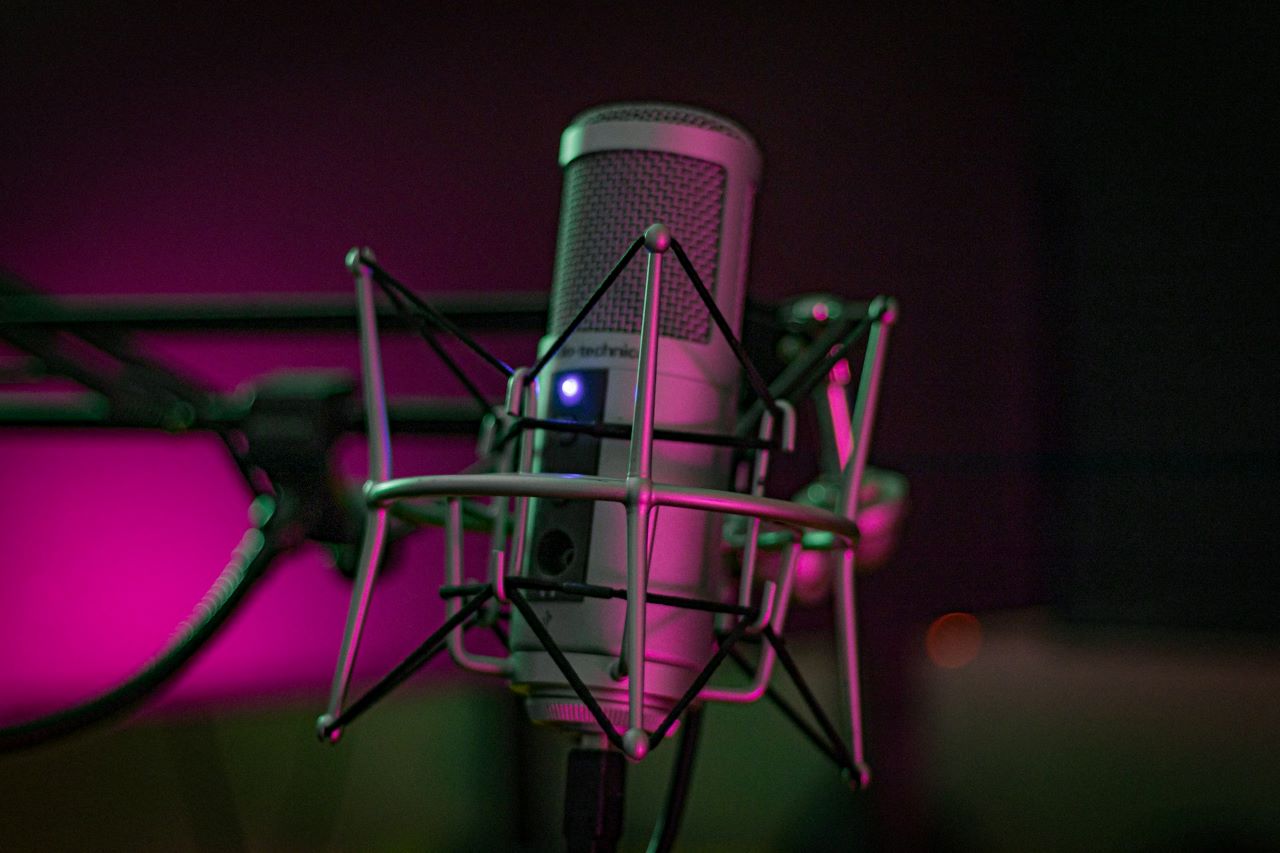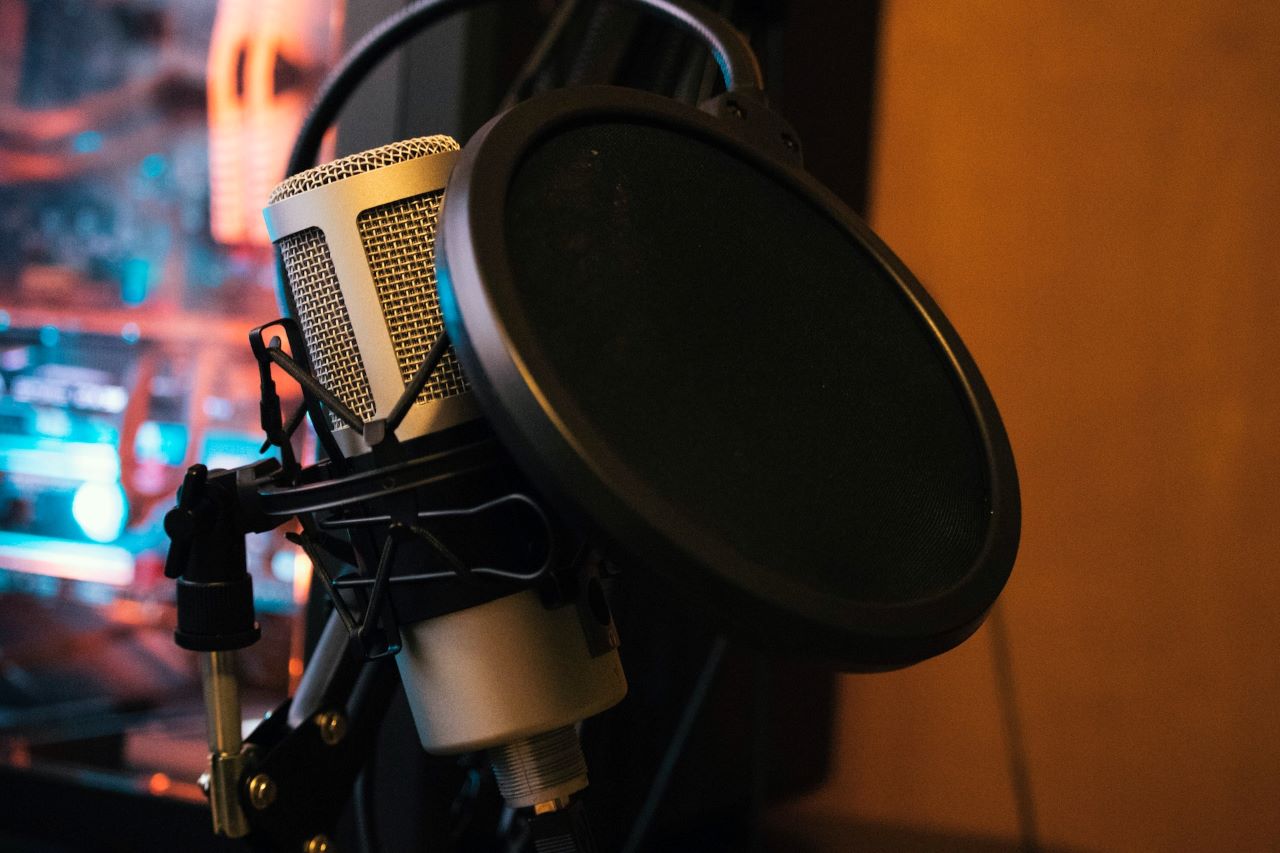You’re about to enter the world of podcast recording, and you’ve got your eyes set on the AT2020 microphone. It’s sleek, it’s praised, and it promises to elevate your sound. But there’s a buzzword floating around – phantom power. What is it? Does your AT2020 need it? It’s time to clear the air.
In the realms of podcasting, music production, or even just for high-quality Skype calls, the right microphone can make all the difference. But it’s not just about picking the microphone; it’s about understanding its needs and making sure you’re equipped to meet them. That’s where we come in. We’re diving into the nuts and bolts of the AT2020, a microphone beloved by many for its clarity and versatility.
But before you plug it in and start recording, let’s talk about power – specifically, phantom power. This article will guide you through the technical maze, breaking down what phantom power is, why it’s important, and, most crucially, if your AT2020 microphone requires it.
Related: Best Microphones For Recording in Podcasting
Contents
Does AT2020 Need Phantom Power?
Phantom power isn’t as spooky as it sounds. It’s simply a method of providing power to microphones that need it directly through the microphone cable. It’s a lifeline for condenser mics, like the AT2020, to function. These mics are known for their sensitivity and accuracy, but this comes with a need for a power source. The AT2020 is no exception.
Most audio interfaces or mixers come equipped with a phantom power option, typically labeled as ‘+48V.’ This indicates the 48 volts of electricity sent through the XLR cable to power your microphone. But why 48 volts? It’s the standard voltage that ensures a balanced power supply for most condenser microphones, providing them with the necessary boost to capture sound with precision.
For the AT2020, this power isn’t just a luxury; it’s a necessity. Without phantom power, the microphone won’t function, or at best, it’ll deliver subpar audio quality. This is due to its internal electronics and condenser capsule, which require a steady power flow to capture sound accurately.
Manufacturer’s Specifications

The AT2020 offers a comprehensive solution for high-quality audio recording in both project and professional studio environments. Image Source.
According to Audio-Technica, the creators of the AT2020, phantom power is a must for this microphone. The AT2020 is designed to be used with a phantom power supply of 48V DC. This specification is not just a recommendation; it’s a requirement for the microphone to operate as intended. It’s important to check your audio interface or mixer to ensure it can provide this power. If it can’t, you might need an external phantom power supply.
The AT2020 is praised for its versatility and affordability, making it a popular choice for both beginners and professionals. But to truly make the most of it, you need to pair it with the right power source. Phantom power is the key to unlocking the crisp, clear sound that the AT2020 is capable of delivering.
Impact Of Phantom Power On AT2020 Performance
Phantom power isn’t just about getting your AT2020 up and running; it’s about unlocking its full potential. The presence or absence of this power supply can make a night-and-day difference in your recording experience.
Sound Quality And Clarity
When it comes to microphones like the AT2020, phantom power is more than just a necessity – it’s a game changer for sound quality and clarity. The AT2020 is a condenser microphone, which means it relies on a capacitor to convert acoustic energy into electrical signals.
This capacitor needs a constant power supply, and that’s where phantom power comes in. With a stable 48V phantom power, the capacitor is consistently charged, ensuring that the microphone’s diaphragm vibrates in response to sound waves without any power-related interruptions.
The technical edge here lies in the sensitivity and accuracy of the microphone’s response. A well-powered AT2020 captures sound with exceptional detail, maintaining a natural, true-to-life quality. This is crucial for applications where clarity and precision of audio are paramount, like studio recording, voice-over work, and musical performances.
The consistent power flow not only helps to maintain the fidelity of the sound but also reduces the chances of distortion, a common issue in less stable power setups.
Longevity And Durability Of The Microphone
The longevity and durability of a microphone are significantly influenced by how it’s powered, and the AT2020 is no exception. The internal components of this microphone, particularly its electronic circuitry and condenser capsule, are finely tuned.
They require a stable and consistent power source to function optimally. An inconsistent or insufficient power supply can cause stress to these components, leading to potential damage or wear over time.
By using the recommended 48V phantom power, the AT2020 operates within its designed parameters. This not only ensures optimal performance but also reduces the strain on its internal components. The result is a microphone that not only performs well but also stands the test of time, resisting the common pitfalls of wear and tear that can plague electronic devices.
Influence On Noise Levels
One of the key benefits of phantom power in a microphone like the AT2020 is the reduction of noise levels. Condenser microphones are sensitive, unlike dynamic microphones, which means they can pick up not just the sound you want but also unwanted electrical noise. This is where a stable 48V phantom power supply shines. It ensures that the power delivered to the microphone is clean and free from fluctuations, which can be a source of noise.
The technical aspect involves the balance between power and signal integrity. With phantom power, the AT2020 receives a consistent voltage, which helps in maintaining a noise-free signal path. This is especially important in professional recording environments where even the slightest hum or buzz can compromise the quality of the recording.
Compatibility With Different Interfaces
The AT2020’s requirement for phantom power influences its compatibility with different audio interfaces and mixers. Most professional and home recording equipment nowadays comes equipped with a phantom power option. However, it’s crucial to ensure that the interface or mixer can provide the stable 48V power that the AT2020 needs.
In technical terms, the interface’s ability to deliver a clean and steady power supply directly affects the microphone’s performance. When connected to a compatible interface with proper phantom power, the AT2020 will perform at its peak, providing the clear, high-quality audio it’s known for. This compatibility aspect is essential for users to consider, ensuring that their entire recording setup is harmonized for the best results.
Impact On Frequency Response
Phantom power plays a pivotal role in the frequency response of the AT2020. A consistent power supply ensures that the microphone can capture a wide range of frequencies accurately. The AT2020 is known for its flat and extended frequency response, meaning it can capture low, mid, and high frequencies with equal fidelity.
The technicality here lies in the stability of the power supply. A steady 48V ensures that the microphone’s internal components can operate efficiently, allowing for accurate capture of sound across the entire frequency spectrum. This is crucial for recordings that demand a high level of detail and nuance, such as in music production or voice acting.
Handling And Operational Flexibility
The AT2020’s design, coupled with its phantom power requirement, offers significant handling and operational flexibility. This flexibility is essential for adapting to various recording conditions and setups. Whether it’s in a controlled studio environment, a home setup, or even in more challenging field conditions, the AT2020 remains reliable and consistent, thanks to its stable power source.
From a technical standpoint, the phantom power ensures that the microphone can maintain its performance characteristics across different environments. This adaptability is key for users who require a versatile mic that can deliver consistent results regardless of the recording scenario.
Power Efficiency And Consumption
Lastly, the power efficiency and consumption of the AT2020, when powered by phantom power, is an important aspect to consider. Despite its need for a constant power supply, the AT2020 is designed to be power efficient. It draws the necessary amount of power without wastage, ensuring that it operates optimally without placing undue strain on the power source.
In technical terms, this efficiency translates to a microphone that not only delivers high-quality audio but also does so in a way that is sustainable and economical in terms of energy use with a USB audio interface. For users, this means that the AT2020 can be used extensively without concerns about excessive power consumption, making this condenser mic an ideal choice for both professional studios and home setups where power efficiency is a priority.
Setting Up The AT2020 With Phantom Power
Before diving into the setup process, it’s crucial to gather all the necessary equipment. Ensuring you have the right tools at hand will make the setup smooth and efficient.
- Audio Interfaces and Mixers: The heart of your setup is the audio interface or mixer. It’s essential to choose a device that provides stable 48V phantom power, which is non-negotiable for powering the AT2020. When selecting an audio interface or mixer, consider factors like the number of inputs, quality of preamps, and additional features that might be beneficial for your recording needs. A good interface or mixer not only powers the microphone but also plays a crucial role in the quality of the sound captured.
- XLR Cables and Connectors: The next critical component is a high-quality XLR cable. This cable is responsible for carrying the audio signal from your microphone to the interface, as well as delivering the phantom power from the interface to the microphone. Opt for a well-shielded cable to minimize the background noise interference. The connectors should be robust and reliable, ensuring a secure connection at all times.
Step-by-Step Setup Guide
Setting up the AT2020 with phantom power involves several steps, each important to ensure optimal performance and sound quality.
- Inspect Your Equipment: Before anything else, inspect your microphone, interface or mixer, and XLR cable. Check for any visible damage or defects that might affect performance.
- Connect the XLR Cable: Attach one end of the XLR cable to the AT2020. Ensure the connection is secure. Connect the other end to the input of your audio interface or mixer.
- Interface/Mixer Setup: Power on your audio interface or mixer. Locate the phantom power switch or setting, often labeled ‘+48V’ or ‘Phantom Power,’ and activate it. Be sure to do this before connecting the microphone to avoid potential damage.
- Test the Connection: After connecting the microphone and enabling phantom power, do a quick test. Speak into the microphone or create sound, and check if the signal is being received by the interface or mixer. Adjust the gain or input level as needed.
- Software Configuration: If you’re using a digital audio workstation (DAW), ensure your interface or mixer is selected as the input device. Test the setup within your DAW to confirm everything is working as expected.
- Final Adjustments: Make any necessary adjustments to the positioning of the microphone and fine-tune the settings on your interface or mixer to suit the specific requirements of your recording session.
By following these steps, you’ll have your AT2020 up and running with phantom power, ready to capture high-quality audio.
Conclusion
Setting up and utilizing the AT2020 microphone with phantom power can seem daunting at first, but it’s a journey worth embarking on for anyone serious about audio quality. Throughout this article, we’ve explored the crucial role of phantom power in bringing out the best in the AT2020 – enhancing its sound quality, ensuring its longevity, and reducing noise levels.
We’ve also discussed the compatibility of the microphone with various interfaces and the impact of phantom power on its frequency response, operational flexibility, and power efficiency.
Equipped with the knowledge of the necessary equipment and the step-by-step guide to setting up the microphone, you’re now ready to harness the full potential of the AT2020. Remember, the quality of your recordings is not just about the microphone; it’s also about how well you power and set it up. With the right setup, the AT2020 on your mic stand can be an incredibly versatile tool, capable of delivering professional-grade audio whether you’re in a studio, at home, or in a field setting.
As you continue your journey in the world of audio recording, let the AT2020, powered correctly with phantom power, be your companion in capturing clear, crisp, and true-to-life sound. Embrace the technicalities, and enjoy the art of creating beautiful audio.
Related: Rode NT1A vs AT2020


